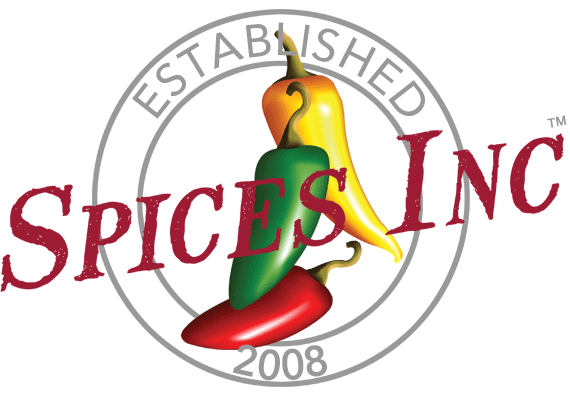Spices, Inc. 2025 Flavor Report
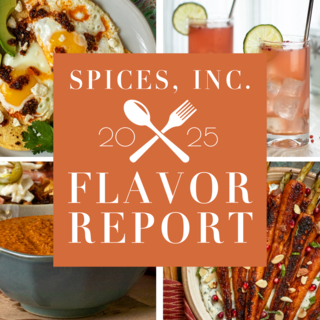
It's that time of the year! As 2024 draws to a close we've taken some time to go back through what we've seen change and emerge in the world of spices, and what to look forward to in 2025. Below is our list of our top eight flavor powerhouses, as well as a few honorable mentions at the end that merited a nod. We'll be watching them to see what happens in 2026. Enjoy the Spices, Inc. 2025 Flavor Report, and happy eating!
Table of Contents
African Spices and Seasonings
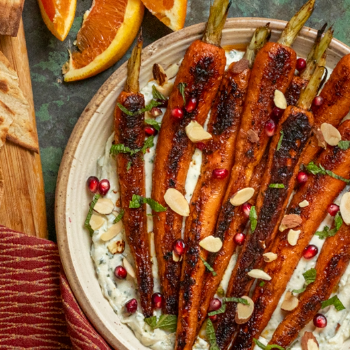
Last year, African seasonings got an honorable mention in our flavor report as a seasoning trend to watch out for. This year, it’s at the top of our list.
African flavors have been making news for the last few years, with an enormous leap in popularity that started in 2023, and the first African restaurants in the world being awarded a Michelin star in March 2024. As we watched interest in African food grow we introduced—or reintroduced—blends from the length and breadth of this continent. We have punchy and complex Merguez Sausage Seasoning that reflects the influence of trade in the northern part of the continent or fiery Mitmita from Ethiopia in the east, which can be traced back to the 3rd century AD. And we have curry-like Chakalaka, which no South African braai—barbecue—would be complete without.
Look for even more African seasonings in 2025 as the Spices, Inc. test kitchen develops entirely new products and the expands existing blends.
Fruit Flavors & Floral Flavors
Botanicals are having a moment. Floral flavors have gained interest in recent years, enjoying an overall growth rate of more than 8% for floral flavors as a whole. This is fueled partly by people expanding their palates and searching out new flavors, and partly because botanicals benefit from a halo effect, perceived as both sustainable and good for you. We’ve watched culinary flower sales, like Culinary Lavender, rise throughout the year. Certain floral flavors, like hibiscus, have jumped in public knowledge and on menus across the country as much as 22%. You can find fragrant rose incorporated into Ras El Hanout and Chai Baking Spice Blend. Pairing floral elements with savory, spicy, or fruity flavors, like you’ll find in Tangerine Hibiscus, provides balance and prevents the floral flavors from taking over; unbalanced floral blends run dangerously close to tasting like potpourri.
Fruit and heat were made for each other with Chili Lime Seasoning, a fruity, spicy, savory blend that marries well with fresh fruit, dried fruit, and floral teas (again, like hibiscus). This year we released Raspberry Chipotle Seasoning which performs well as a barbecue blend. We’re planning for more blends in 2025 that play with the way sweet, savory, and floral flavors combine both for food and for the growing spiced beverage market. While citrus is always a favorite, keep an eye out for pineapple and apple.
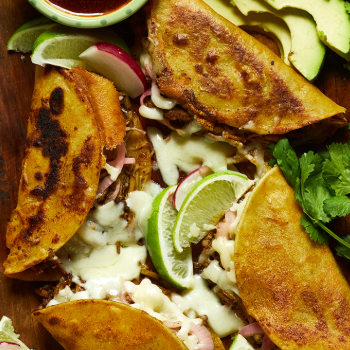
Global Street Foods
Street foods can be found all around the world and they are almost always reflective of the flavors of the region. Street food—sold from stalls, carts, trucks, or pop-up outlets—has been around for thousands of years and originated as a cheap way to provide food to the hungry masses. Now, street foods are celebrated as a quick and easy way to interact with cultural flavors, and their appeal has broadened to traditional sit-down restaurants and even fine dining menus.
We have seen the demand for Birria Taco Seasoning increase, and in places other than Mexican or Tex-Mex restaurants. Birria Taco Seasoning is regularly sold to trendy gastropubs, seafood restaurants, and olive oil shops.
Mexican Corn on the Cob Seasoning, used to make elote and esquites, can be found everywhere from farmer’s markets to brewpubs.
Sausages are one of the earliest forms of street food and are open to an enormous array of ingredients and seasonings. They’re an easy way to explore international snacking and are accessible to vegetarians thanks to the current array of alt-meat options. Our current sausage seasonings incorporate Italian flavors, French influence, and Mexican and Tex-Mex flavors. We’ve recently introduced north African Merguez sausage seasoning and brought back Turkish Kofte to provide more sausage options, and have plans for several more sausage seasonings in the coming year.
Curries
“Curry” has come to be a catchall phrase for a hearty stew that’s usually savory, spicy, and has a creamy element. Thai and Indian curries are commonly found on American menus and aren’t particularly trending, but for one exception: people are increasingly interested in vegan and vegetarian curries across all flavor profiles.
As people look to expand their palates, however, they are looking to curries or curry-like dishes in other cultures as relatable entry points to a new cuisine. We’ve already mentioned South African Chakalaka, but there are many African blends, like Berbere (spicy) or Baharat (mild) that are increasingly used as curry blends. Caribbean curries are bright yellow, turmeric heavy blends. Trinidad Curry Powder gets its heat from scorching hot Scotch bonnets. Colombo Powder’s pungency comes from ground mustard, which gives it a cozy warmth rather than a searing heat. Filipino curry tends to be more vinegary and less spicy than other curries, but rich in aromatics like onions and coconut. Indonesian Sambal, by contrast, is a symphony of chile peppers and garlic. Look for more hyper-localized curry blends in the coming year.

Gourmet and Smoked Salts
It’s been noted that salt is the only rock we eat. It’s been an important aspect of civilization for millennia. It’s the root of words we still use today, like salary, and salt mining or trading cities were often given names that reflected their business, like Salzburg. Salt also brings out the flavors in foods, and gourmet salts are in demand. The gourmet salt industry grew by 7% in 2023-2024 and is expected to grow at a compound rate of 7.9% annually until 2028.
Salt functions largely thanks to chemistry; larger or smaller flakes dissolve at different rates and when you’ve got salts that are smoked or seasoned, it can create layers of nuance. Seasoned Salt and Smoky Citrus Salt are our two top selling salt blends that sell consistently throughout the year, and Smoked Bourbon Barrel Salt, with its big crunchy flakes and punchy flavor, is in our top 10 for raw products, as popular as cinnamon and red pepper flakes. We’re planning to expand our salt line with at least one reintroduction of an old favorite and one new Japanese salt blend in the future. Stay tuned!
Sauces
Sauces are a fantastic way to deliver unique flavors to a dish. They’re often highly seasoned and make it easy to diversify palates and menus. In the past year we’ve introduced Mexican Salsa Macha and pert Chamoy, a classic Carolina Gold BBQ, Raspberry Chipotle in two different sauces, and Espresso Salted Caramel, which can be drizzled over everything from cocktails, to tofu, to pork chops.
This year we’re expecting sweet-heat sauces—think Honey Habanero—to stand out, both as a finishing sauce and as a marinade. We’re also looking for ways to brighten up some old classics; we’ve got plans for adding an Asian twist to a barbecue sauce and for creating an expanded line of spicy Ranch Dressing blends.

Mocktails
Mocktails have made an enormous impact on the shape of menus, dining, and home consumption. Datassential said the presence of mocktails on menus increased by a staggering 223% from 2019-2023. Gen Z who are 21 and over and younger Millennials (under 35) are 48% more likely to order mocktails than other demographics, and the over-35 group is 29% more interested in functional beverages, like soothing Golden Milk, to help boost mood and reduce stress. Mocktails are also inclusive; with 75% of Americans participating in Dry January or Sober November, and increasingly identifying as non-drinking or sober curious, a crafted mocktail gives the consumer the opportunity to enjoy a fancy drink and be a part of the party.
In this past year we created three different seasoning blends appropriate for cocktails, mocktails, or caffeinated refresher beverages—Hibiscus Ginger Lime Rub, Espresso Salted Caramel, and Bloody Mary Mix. In the coming year, expect more blends that are created with beverages in mind in an array of flavor profiles that will range from the warm and cozy to the bright and fruity.
Mustard
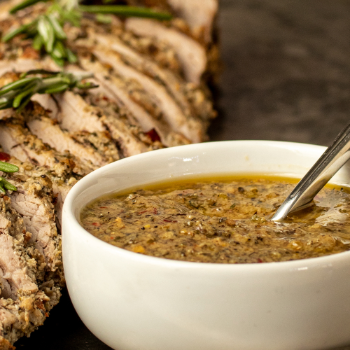
Mustard: What’s old is new again. This tried and true favorite has become one of the latest stops on the “newstalgia” train. It gained momentum in social media recipes and has held interest because of its versatility, it lends itself to sustainable farming practices, and it’s economical. It also has a distinctively spicy pinch that appeals to people who are on the search for heat.
Mustard is, of course, in America’s top tier of condiments, along with ketchup, mayonnaise, and salsa, but it can be used in an enormous variety of ways. Look for whole mustard seeds added to breads and crusts, rolled into wraps, or stirred into a gooey mac and cheese as a way to add crunch and a pop of heat. Brew it into beer. Toss over vegetables like potatoes or cabbage and roast. We, of course, have mustard in mind for seasoning blends. This year saw us introduce the Carolina Gold Barbecue Rub, but we have plans for at least one sausage blend and a super-spicy chili blend featuring both ground and whole mustard, in appreciation of the texture, flavor, and good old-fashioned comfort that mustard brings.
Honorable Mentions
Fermented Foods
Fermented foods, like miso, kimchi, and kombucha, will remain popular. In the same way functional mocktails are used as a way to tune up their mood or balance hormones, people look to fermented foods for gut-healthy and probiotic-rich options. We anticipate that more restaurants will experiment with in-house fermentation processes to create unique flavors. Most of these will come about from raw spices, like peppercorns, dill seed, caraway seed, mustard seed, cumin seed, and aromatics like minced onion and garlic.

Japanese Cuisine
As American palates expand so does the interest in flavors from cuisines we’re not overly familiar with. Japanese cuisine is more subtle than other Asian cooking styles and does not make abundant use of chiles. It relies more on sugar, salt, soy, citrus, bonito, and dashi, with pinches of wasabi. This past year we released a sweet, funky Japanese Curry Powder and have plans for an expansion of our Japanese seasonings as demand increases.
Seasoning Vegetables and Side Dishes
Begone, boring vegetables! For a very long time chefs have been experimental with their appetizers and main dishes, with vegetables and sides relegated to a simple treatment of salt and pepper. As interest in meatless eating climbs, though, so does interest in giving side vegetables as much attention as you would a main dish. Recently we’ve paired acorn squash with Dukkah and roasted carrots with spicy African Mitmita—vegetables can stand up to a lot of bold flavors that create surprisingly delicious combinations.
